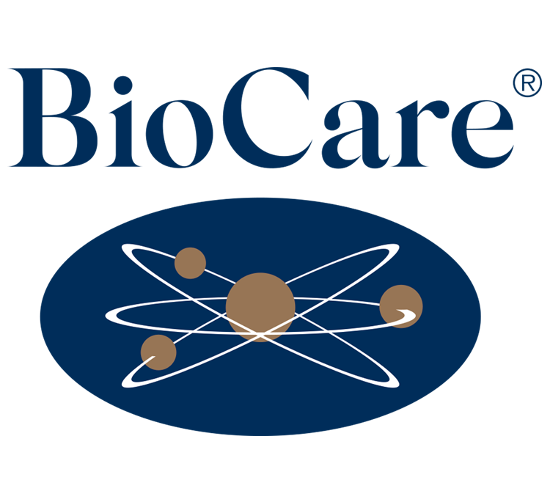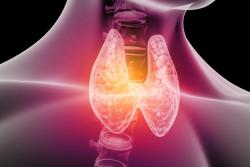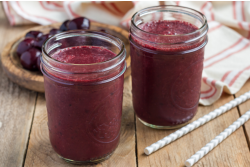Folic acid, folate, methylfolate, vitamin B9; so many names for one nutrient! Are you confused about folate; the different forms, what it does and whether you might be deficient?
Folate is an umbrella term for a group of molecules found in foods and supplements. The name folate comes from the Latin word ‘folium’, which stands for leaf, as it’s commonly found in a lot of leafy vegetables. In fact, it was first isolated from spinach. Other dietary sources of folate include meat, eggs and dairy, broccoli and legumes.1,2,3
By supporting a process called methylation, folate indirectly supports many functions:
- Cell replication, DNA synthesis and repair,4 thus crucial during periods of growth such as childhood or pregnancy, as well as for repair of damaged tissue caused by general wear and tear and ageing, injuries or an inflammatory condition such as arthritis.
- Red blood cell formation5 for oxygen delivery throughout the body.
- Hormone and neurotransmitter metabolism, including detoxification of oestrogen.6
- Homocysteine metabolism7 – high homocysteine increases the risk of heart disease,8 cognitive impairment9 and depression.10
- Histamine breakdown11 and so it is helpful in allergic conditions such as hay fever or asthma.
- Healthy pregnancy and foetal development.
The symptoms and risk associated with folate deficiency include:
- Low energy and fatigue
- Megaloblastic anaemia - abnormally large and dysfunctional red blood cells
- Female hormone imbalances e.g. heavy and painful periods
- Heart disease, high blood pressure
- Infertility
- Increased risk of neural tube defects (NTDs) such as spina bifida12 and cleft-lip and palate in babies.13,14
- Memory, cognitive and mental health problems
Are you getting enough?
A recent National Diet and Nutrition Survey concluded some worrying statistics. According to their findings, up to 60% of children (age 11-18), 56% of adults up to the age of 64 and 36% of adults over 65 were in the risk group for folate insufficiency. Even more concerning, out of all women in child-bearing age, a staggering 75% had inadequate folate levels for the prevention of foetal neural tube defects!15
Folate absorption and utilisation depends on multiple factors, including our genetics,16,17,18digestion, environment, and general state of health and metabolism. This means that we all have unique folate requirements.
In the body, folate exists in the three bioactive forms:
- Methylfolate or 5-MTHF (5-methylene tetrahydrofolate) – the most abundant form of folate in the body19 and a major co-factor for chemical reactions.
- 10-formyltetrahydrofolate and 5,10-methylenetetrahydrofolate - needed for DNA synthesis and repair.
Some folate found in foods, as well as folic acid from supplements, needs to be converted to these active forms in the body. Some individuals may struggle with that conversion meaning they won’t get the full benefit. You can overcome poor conversion by supplementing with methylfolate directly instead. In fact, it’s been shown that methylfolate is 3 times more bioavailable than folic acid.20
One of the mutations that has been linked to poor folate conversion is MTHFR (methylenetetrahydrofolate reductase) gene, which codes for an enzyme that synthesises methylfolate. Mutations are quite common, with up to 50%21 of population affected, depending on ethnicity,22 and can reduce folate conversion by between 45%23 and 70%.24 This mutation has been studied extensively and linked to miscarriages,25 pre-eclampsia,26 birth defects,27 cardiovascular disease,28 multiple sclerosis, rheumatoid arthritis and autism.29
How much do you need? The recommended daily intake of folate in the EU for adults is 200mcg and increases up to 300mcg in pregnancy,30 while in Australia, for example, they recommend 400mcg in adults and 600mcg in pregnant women.31 In general, supplementation varies from 100-1000mcg with higher dosages being sometimes recommended to people with underlying health issues, or those with genetic variants. Although if supplementing with methylfolate, you may not require very high dosage because of its superior absorption. For example, 400mcg of methylfolate is effective at reducing homocysteine levels,32 while in people with infertility, a higher dose (800mcg) may be required.33 It is important not to supplement with too much folate however, so make sure you consult a health practitioner if you have specific issues or are deficient.
Top tips to increase your folate status:
- Steam your vegetables, rather than boiling them to prevent folate loss through cooking. Folate is very sensitive to light, heat and oxygen and so long-term storage. One study found that boiling spinach and broccoli resulted in between 40-50% of folate loss, whereas steaming had had barely no effect.34
- Eat your greens in the least processed form as possible. Use them in salads or use kale and spinach in smoothies.
- Soak your beans and lentils to decrease the amount of phytates – ‘antinutrients’ which bind to vitamins and minerals in the gut and prevent their absorption.
- Avoid drinking caffeinated drinks with your meals as they can also reduce absorption of nutrients.
- Minimise alcohol intake as it is linked to folate deficiency.35
- Look after your gut health with probiotics - common probiotic bacteria, especially from the Lactobacilli and Bifidobacterium species, can produce folate, which contributes to overall folate status.36
- Increase your intake of B2 sources. Vitamin B2 helps your body make methylfolate - beetroot tops, mushrooms, asparagus, sea vegetables, eggs, collard greens, broccoli, swiss chard, green beans, kale, peppers, daikon radish, liver.37
- Avoid excessive exposure to UV light as it can break down folate in the skin.38 Or make sure you increase your dietary intake in the summer months or when on holiday.
Got a question?
The brand you can talk to:
We have a team of Nutritionists at the end of our advice line, open to you, for product support and advice (5 days a week). 0121 433 8702 or clinicalnutrition@biocare.co.uk
Or head to our advice page where you can find Healthnotes.
Not registered for an account with BioCare®?
You can register now to receive up to date news, product information and exclusive offers whether you are a consumer, practitioner or retailer.
________________________________________________________________________________
References
1Vahteristo L et al. Application of an HPLC assay for the determination of folate derivatives in some vegetables, fruits and berries consumed in Finland. Food Chem. 1997;59(4):589-597.
2 Vahteristo LT et al. Liquid chromatographic determination of folate monoglutamates in fish, meat, egg, and dairy products consumed in Finland. J AOAC Int. 1997;80(2):373-8.
3 Melse-Boonstra A et al. Dietary monoglutamate and polyglutamate folate are associated with plasma folate concentrations in Dutch men and women aged 20-65 years. J Nutr. 2002;132(6): 1307-12
4 Ebara S. Nutritional role of folate. Congenit Anom (Kyoto). 2017;57(5):138-141.
5 Koury MJ, Ponka P. New insights into erythropoiesis: the roles of folate, vitamin B12, and iron. Annu Rev Nutr. 2004;24:105-31
6 Thomas M.P, Potter B. The structural biology of oestrogen metabolism. J of Steroid Biochem Mol Biol. 2013; 137: 27-49.
7 Yang et al. Efficacy of folic acid supplementation in cardiovascular disease prevention: an updated meta-analysis of randomized controlled trials. Eur J Intern Med 2012; 23 (8): 745-54.
8Wald D et al. ‘Homocysteine and cardiovascular disease; evidence on causality from a meta-analysis’. British Medical Journal. 2002;325:202.
9 Smith A.D, Refsum H. Homocysteine, B vitamins and cognitive impairment. Annu Rev Nutr. 2016;36:211-239.
10Aishwarya S et al. Homocysteine and serotonin: association with postpartum depression. Asian J Psychiatr. 2013;6(6):473-7.
11 Maintz L, Novak, N. Histamine and histamine intolerance. Am J of Clin Nutr. 2007; 85 (5): 1185-1196.
12 Donnan J et al. A systematic review of the risk factors associated with the onset and natural progression of spina bifida. Neurotoxicology.2016.
13 Kelly et al. Use of folic acid supplements and risk of cleft lip and palate in infants: a population-based cohort study. Br J Gen Pract. 2012; 62: 466 -72.
14 Houston. Taking folic acid at start of pregnancy seems to lower risk of cleft lip and palate. BMJ. 2012; 345: e4614.
15 National Diet and Nutrition Survey: Blood folate results for the UK, Scotland, Northern Ireland (Years 1 to 4 combined) and Wales (Years 2 to 5 combined) Revised November 2017
16 Bueno O et al. Common Polymorphisms That Affect Folate Transport or Metabolism Modify the Effect of the MTHFR 677C > T Polymorphism on Folate Status. J Nutr. 2016;146(1):1-8.
17Qiu A et al. Identification of an intestinal folate transporter and the molecular basis for hereditary folate malabsorption. Cell. 2006;127(5):917-28.
18 Guo J et al. The maternal folate hydrolase gene polymorphism is associated with neural tube defects in a high-risk Chinese population. Genes Nutr. 2013;8(2):191-7.
19 Sobczyńska-Malefora A et al. Plasma and Red Cell Reference Intervals of 5-Methyltetrahydrofolate of Healthy Adults in Whom Biochemical Functional Deficiencies of Folate and Vitamin B12 Had Been Excluded. Advances in Hematology. 2014;465623:7 pages.
20Miraglia N et al. Enhanced oral bioavailability of a novel folate salt: comparison with folic acid and a calcium folate salt in a pharmacokinetic study in rats. Minerva Ginecol. 2016;68(2): 99-105.
21 AbdRaboh N.R et al. Prevalence of methylenetetrahydrofolate reductase C677T and A1298C polymorphisms in Egyptian patients with type 2 diabetes mellitus. Egyptian Journal of Medical Human Genetics. 2013;14(1):87-93.
22 Guéant-Rodriguez RM et al. Prevalence of methylenetetrahydrofolate reductase 677T and 1298C alleles and folate status: a comparative study in Mexican, West African, and European populations. Am J Clin Nutr. 2006;83(3):701-7.
23Weisberg et al. The 1298A-->C polymorphism in methylenetetrahydrofolate reductase (MTHFR): in vitro expression and association with homocysteine. Atherosclerosis. 2001;156: 409-15.
24Frosst P et al. A candidate genetic risk factor for vascular disease: a common mutation in methylenetetrahydrofolate reductase. Nat Genet. 1995;10:111-13.
25 Chen H, Yang X, Lu M. Methylenetetrahydrofolate reductase gene polymorphisms and recurrent pregnancy loss in China: a systematic review and meta-analysis. Arch Gynecol Obstet. 2016;293(2):283-90.
26 Farahmand K, et al. Thrombophilic genes alterations as risk factor for recurrent pregnancy loss. J Matern Fetal Neonatal Med. 2016;29(8):1269-73.
27Yadav U et al. "Polymorphisms in folate metabolism genes as maternal risk factor for neural tube defects: an updated meta-analysis". Metab Brain Dis. 2015;30(1):7-24.
28Alam M.A et al. Association of polymorphism in the thermolabile 5, 10-methylene tetrahydrofolate reductase gene and hyperhomocysteinemia with coronary artery disease. Mol Cell Biochem. 2008;310(1):111-17.
29 Shaik Mohammad N et al. Clinical utility of folate pathway genetic polymorphisms in the diagnosis of autism spectrum disorders. Psychiatr Genet. 2016;26(6):281-286.
30 British Nutrition Foundation 2016. “Nutrition Requirements”. Available at: https://www.nutrition.org.uk/attachments/article/234/Nutrition%20Requirements_Revised%20Oct%202016.pdf
31 Nutrient Reference Values for Australia and New Zealand. Commonwealth of Australia 2006. Available at: https://www.nrv.gov.au/sites/default/files/content...
32 Mazza A et al. J Biol Regul Homeost Agents. 2016;30(3):921-927.
33Servy EJ et al. MTHFR isoform carriers. 5-MTHF (5-methyl tetrahydrofolate) vs folic acid: a key to pregnancy outcome: a case series. J Assist Reprod Genet.
34 McKillop DJ et al. The effect of different cooking methods on folate retention in various foods that are amongst the major contributors to folate intake in the UK diet. Br J Nutr. 2002;88(6):681-8.
35 Medici V, Halsted CH. Folate, alcohol, and liver disease. Mol Nutr Food Res. 2012;57(4):596-606.
36 Rossi M, Amaretti A, Raimondi S. Folate Production by Probiotic Bacteria. Nutrients. 2011;3(1):118-134.
37 Adapted from whfoods.com and nutritiondata.com
38 Cordain L, Hickey MS. Ultraviolet radiation represents an evolutionary selective pressure for the south-to-north gradient of the MTHFR 677TT genotype. Am J Clin Nutr. 2006;84(5):1243; author reply 1244-5.






